Positive Ethereum and Arbitrum network developments and the eventual improvement in crypto investor sentiment could lend a boost to the ARB price.
While the Arbitrum governance token ARB has been in a consistent downturn since the airdrop in late March, its ecosystem shows healthy growth.
A recent Nansen report shows that Arbitrum’s activity improved after the airdrop, stabilizing “at a level higher” than before the airdrop. The daily active users, gas fees and transaction count have maintained consistently higher levels since April 2023.
The gap between the number of active users on Arbitrum and Optimism widened after the Aribtrum airdrop, closing in on Ethereum.
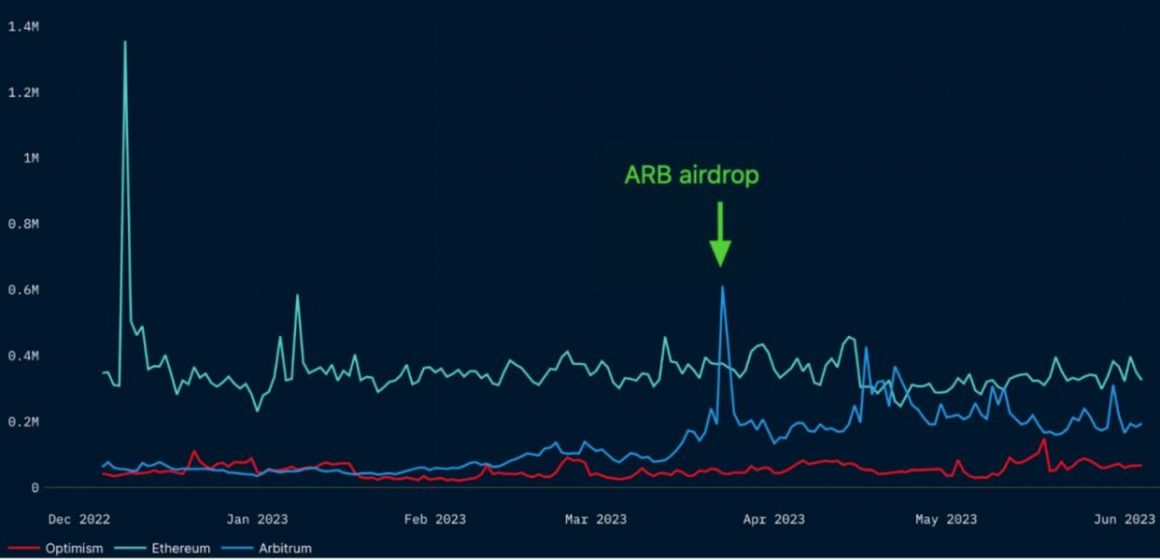
The trading volume on Arbitrum-based decentralized exchanges paints a similar picture, showing an evident rise in volume after the airdrop.
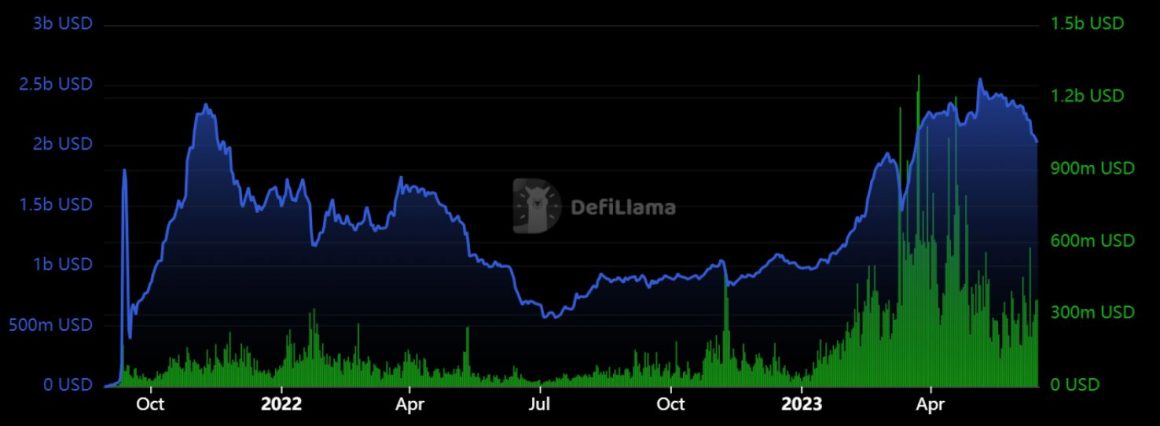
Moreover, Nansen’s report shows that ARB airdrop recipients only accounted for around 5% of the activity on the blockchain and that Arbitrum has attracted considerably more new users after the airdrop.
Potential catalysts for ARB upside
Moreover, an upcoming update on Ethereum in the second half of 2023, dubbed as Cancun-Deneb (Dencun), will include EIP-4844 (proto-Danksharding), which will reduce the transaction fees on Arbitrum, increasing the blockchain’s value proposition.
Additionally, the Arbitrum Foundation recently revealed accumulated data from its sequencer, a part of the layer-2 fees paid by users for posting the data onto Ethereum.
The foundation has decided to pass on the sequencer’s earnings, totaling 3,352 Ether, or $5.4 million, to the Arbitrum DAO, and the ETH will be managed by ARB holders.
Now, let’s take a look at the L2 surplus fee:https://t.co/L43TAexzyi
The surplus fee has accumulated ~1,462 ETH and it can be collected by the DAO.
— Arbitrum (💙,🧡) (@arbitrum) May 10, 2023
A revenue source for the DAO — a decentralized autonomous organization — can potentially create yields for ARB holders if the community votes to direct the rewards to holders. It remains to be seen how the funds will be managed by the foundation and the DAO.
“Smart money” is holding ARB
Nansen’s data shows that the “smart money” and funds that accumulated ARB after the airdrop still haven’t sold, which is encouraging. The on-chain analytics firm tags Ethereum addresses of high-volume and profitable traders as “smart money.”
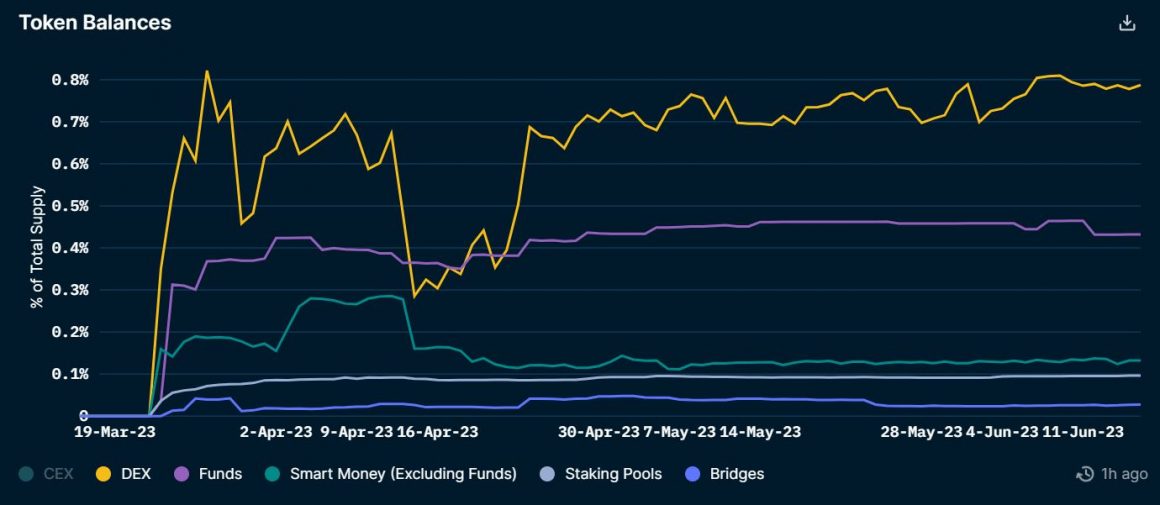
The funding rate for ARB perpetual swap contracts turned negative like the rest of the crypto market after the Securities and Exchange Commission (SEC) brought lawsuits against the industry’s largest exchanges, Binance and Coinbase, per CoinGlass data.
Funding rates are paid by perpetual swap traders for shorting or longing an asset depending on its demand. If the demand for short orders is higher, it is deemed more expensive, so traders on the short side pay longs.
Currently, the funding rates are near zero, suggesting that futures traders are neutral on ARB.

The ARB/USD pair has observed a downward trend since the token’s launch in March. The compression of the channel shows the possibility of a descending wedge pattern, which has a tendency to break to the upside.
However, if ARB breaks below the support line of the wedge pattern around $0.90, the move to the downside can amplify quickly.
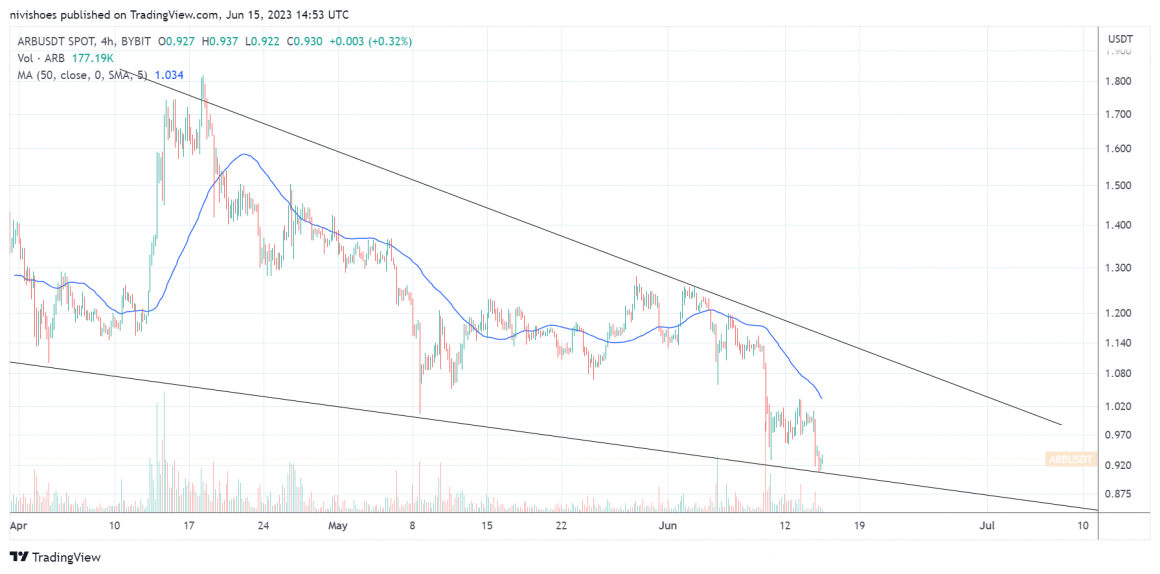
On the ETH scale, ARB broke below May’s low of 0.00057 ETH after the SEC’s lawsuits. At the time of publication, the token was trading at 0.00056 ETH.
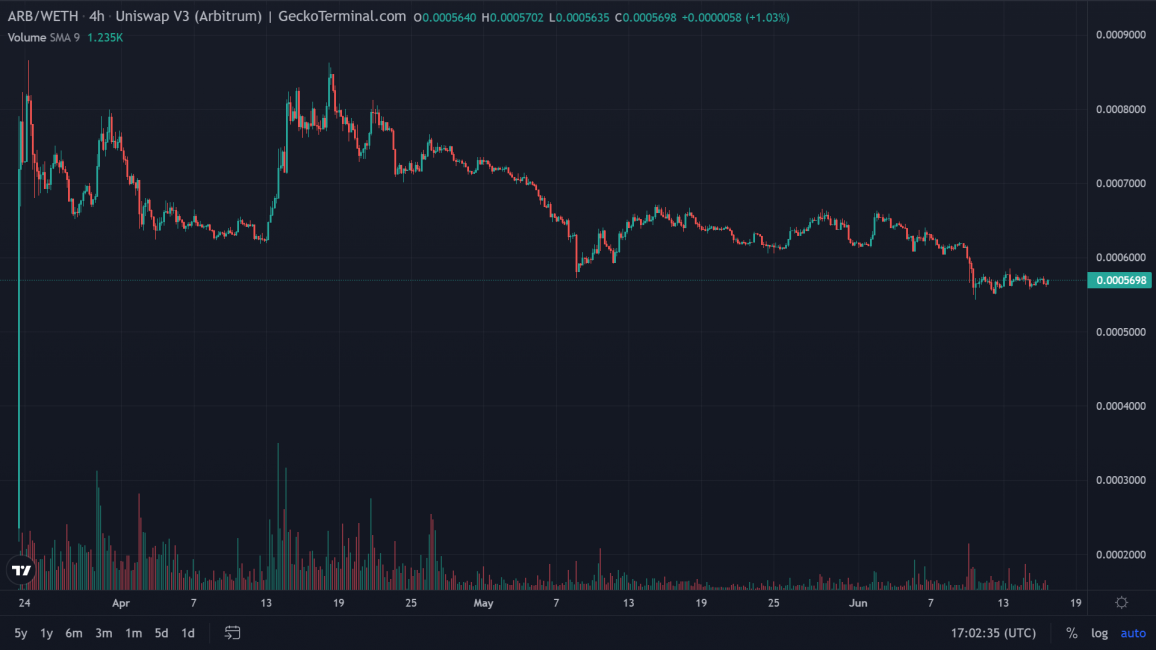
Technically, ARB shows the possibility of a negative trend reversal. Nevertheless, the upcoming Dencun update on Ethereum and decisions taken by the Arbitrum Foundation in directing revenue from the L2 rollup will ultimately dictate ARB’s price action.



